With a focus on non-fed species, Connecticut-based startup is spreading its model for polyculture
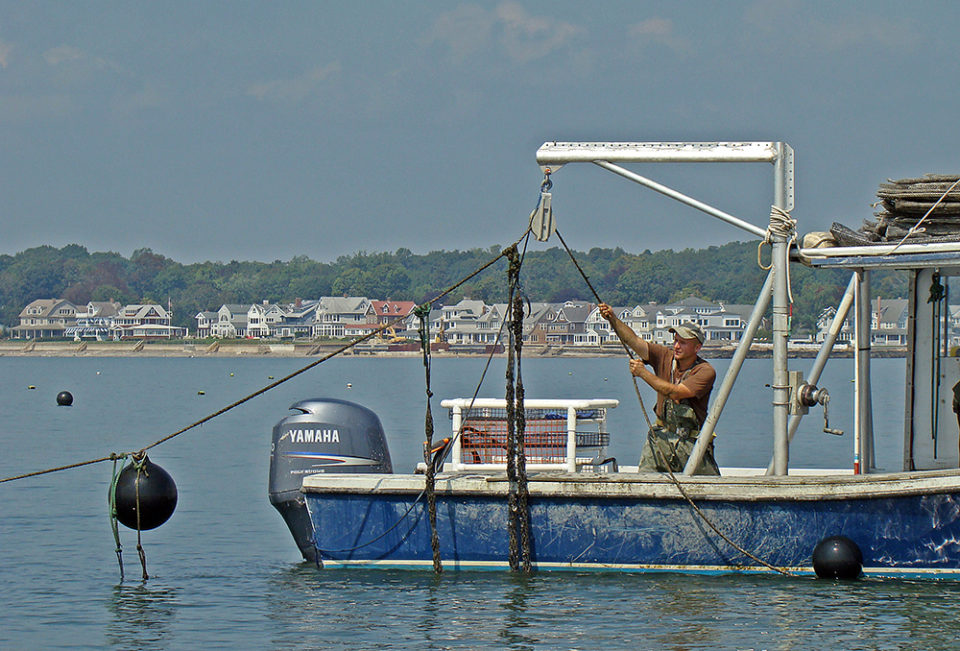
When you talk with Bren Smith, the founder of GreenWave, don’t call what he’s trying to do IMTA – integrated multi-trophic aquaculture, wherein the byproducts, including waste, from one aquatic species provides food and fertilizer for another.
A fisherman by trade, and a DIYer in the aquaculture industry for more than a decade, says “IMTA” just isn’t the language of the regular folks he speaks with every day. Besides, Smith would rather you think of what he’s doing as polyculture – growing multiple species in one ocean farm, for man and the sea.
“For me, the future of aquaculture is two things,” said Smith. “One, it’s polyculture in the ocean. Two, it’s rethinking the starting point on what types of species to grow, and looking at the ocean and asking not ‘what do people want to eat where markets are now,’ but what are the smartest things to grow, environmentally, economically and nutritionally. Why grow things we have to feed when the beautiful thing about our oceans is that we can grow things we don’t have to water, fertilize and feed?”
Unless he finds a way to cultivate the seaweed form of Doritos, Smith is likely to have better luck changing how the ocean is farmed than what consumers put on their plates. So, with his non-profit GreenWave (and sister for-profit company Sea Greens Farms) he’s attempting to create a replicable model for ocean farming.
His plan came about some 15 years ago when the former commercial fisherman started farming oysters, and wondered how he could do so on 20 acres and still be economically viable. The answer was vertical polyculture: Grow kelp with oysters with mussels with scallops, and generate profits from them all.
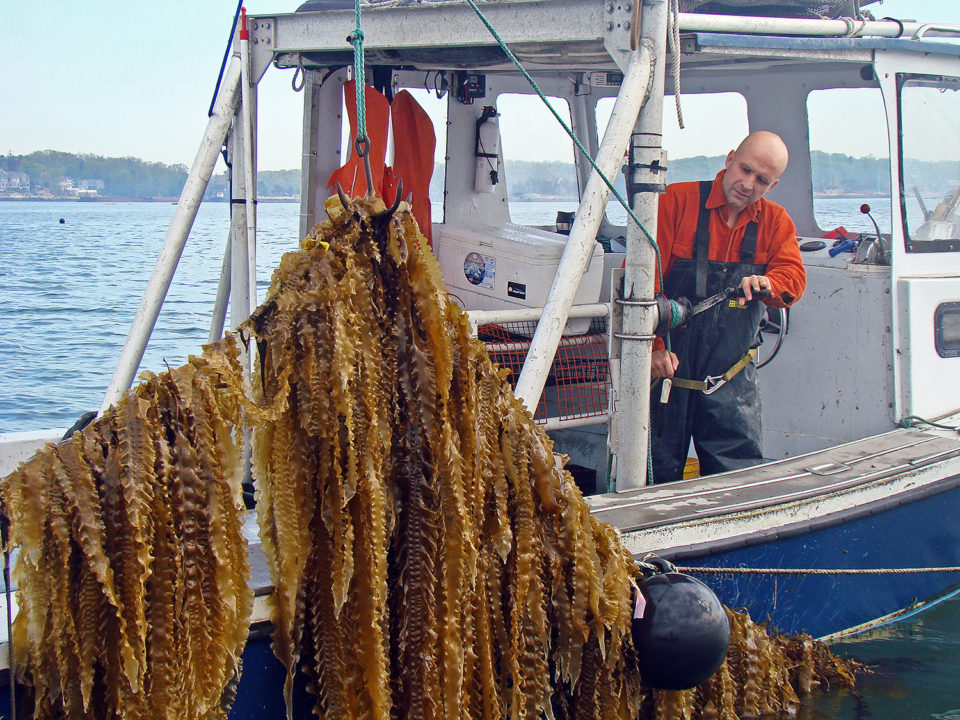
Smith created a prototype that he installed it at his own farm – Thimble Farms, located in the Thimble Islands off the coast of Branford, Conn. The farm was anchored at the corners, and had an internal scaffolding with kelp hanging in the middle of the water column. Oysters grew in cages on the ocean floor.
“I’m a cheap bastard, so I was trying to make something really cheap,” said Smith. “The great thing is, in the water is you don’t have to fight gravity and you don’t have to create a lot of structure – you’re just creating a simple rope scaffolding under water that’s cheap to set up, and that you can move very quickly.”
When Smith’s design panned out, he decided to create an open model, and replicate it. Today, that initial vertical polyculture farm is the backbone of Smith’s non-profit, GreenWave, which helps others get their own farm started, and his for-profit company, Sea Greens Farms. With just 20 acres, a boat and $20,000 – which GreenWave says covers the cost of equipment – anyone can start a farm that produces a mix of oysters, mussels, clams, scallops and sugar kelp.
Why grow things we have to feed when the beautiful thing about our oceans is that we can grow things we don’t have to water, fertilize and feed?
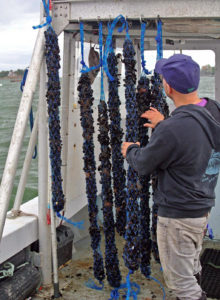
Today, there are 10 GreenWave farms dotting the East Coast. The farms are delineated at the corners by buoys that bob above hurricane-proof anchors. Nine feet below the surface, a horizontal line serves as the farms’ scaffolding system, to which a string covered in kelp starts is fastened. Come spring, after the kelp is harvested, a mussel set is attached to the leftover kelp stems, and grown out until they’re ready to be moved to a mussel sock and hung from the kelp line. Around the same time, scallops are attached to the horizontal lines in lantern nets and, year-round, the ocean floor is lined with cages full of oysters. Between the kelp/scallop/mussel rows, slow growing clams mature in wire containers in the mud.
The farms are modular, which means that those dedicated exclusively to seaweed can easily be removed. In high-traffic areas, seaweed-only farms can be launched in October or November and removed again in April or May. But even when the farms are in place throughout the year, they’re open to the public. With the exception of a large keeled sailboat, anyone can boat, fish, or swim through the farm. GreenWave doesn’t own the spaces they farm, they just lease the rights.
GreenWave trains farmers – which include retired fishermen, Iraqi vets and indigenous people – who get access to free seed for two years, two years of consulting, cold weather gear from Patagonia, permitting support that comes thanks to a handful of pro bono lawyers engaged with GreenWave, and guaranteed purchasing of the kelp. Finding a market for species such as scallops and clams is typically not an issue.
Smith’s for-profit company – Sea Greens Farms – provides all of the guaranteed purchasing as well as processing of the seaweed harvests. Currently, the company sells the kelp to a handful of institutional partners, including Google and Patagonia, and has enough standing orders to guarantee a market for some time to come.
We have an environmental effect, but I’m not really an environmentalist.
By this fall, Smith expects GreenWave’s 10 farms will become 25. The company has requests to start farms in every coastal state in North America, and 20 countries around the world, but Smith admits having no means of achieving that. The model for scalability that Smith does envision is built around what he calls the GreenWave reef: 25 farms clustered in an area; a seafood processing hub and hatchery on land; and a ring of institutional investors surrounding it all. This set-up would then replicated every 200 miles or so down the coast.
All this seaweed is likely to stay in North America, too. While the culinary market is the primary, there are the cosmetics, pharmaceuticals, biofuels, and animal feed and land-based fertilizer markets to consider, too.
Plus kelp and seaweed are great at remediation. Beyond creating zero-input food, the farms also soak up nitrogen and carbon, which is good for the environment. Not that Smith thinks of himself as a conservationist. Mostly, he just wants healthy oceans for his own personal benefit, which is why he created the open source model. In this case, many farmers make for healthier waters.
“We have an environmental effect, but I’m not really an environmentalist,” said Smith. “My environmentalism comes from an economic perspective of ‘How do I die on my boat one day?’”
Author
-
Julie H. Case
Julie H. Case writes about travel, wine, food, science, mushrooms and more. Her work has appeared everywhere from Alaska Airlines Magazine to Wired.
Tagged With
Related Posts
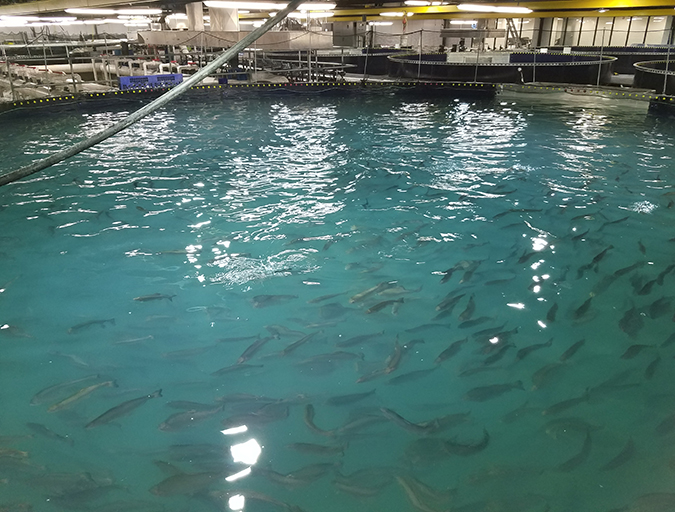
Intelligence
A land grab for salmon (and shrimp) in upstate New York
The operators of Hudson Valley Fish Farm see their inland locale as a pilot to prove that land-based fish farming, located in close proximity to major metropolitan markets, can be successful.
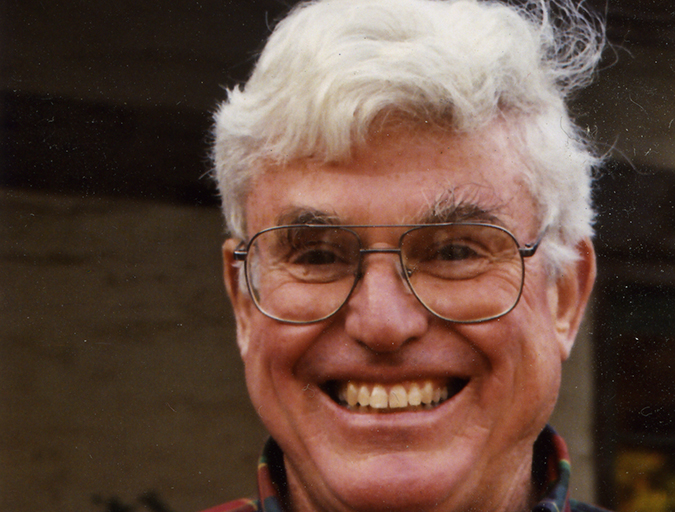
Innovation & Investment
Aquaculture Exchange: George S. Lockwood
With his book, “Aquaculture: Will it Rise to Its Potential to Feed the World?” hot off the presses, the pioneer abalone farmer vents on U.S. aquaculture regulations but remains deeply optimistic about fish farming.
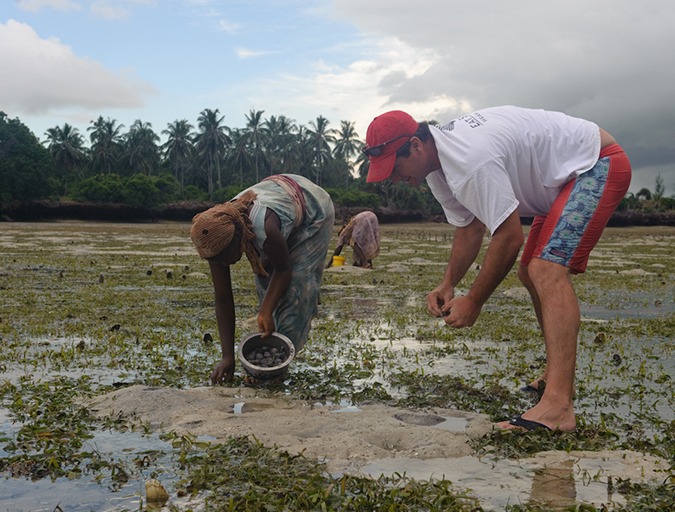
Responsibility
Social oysters: Aquaculture inspiring communities
Two New England shellfish producers are furthering their innovative social license initiatives, both in their hometowns and in food-insecure regions overseas. Island Creek Oysters and Matunuck Oyster Farm have become admirable aquaculture ambassadors.

Innovation & Investment
With oyster nursery, San Diego steps toward aquaculture
The waters off the United States’ eighth-largest city may seem an unlikely place to grow oysters, but in a surprise announcement last month, officials from the Port of San Diego said they’re aiming to do just that.


